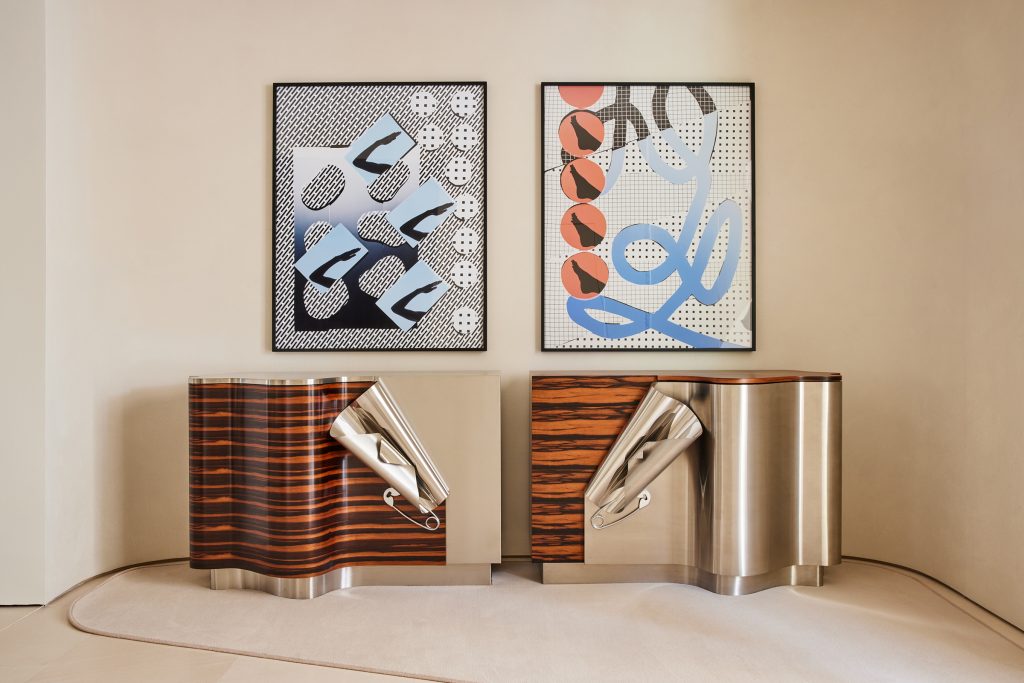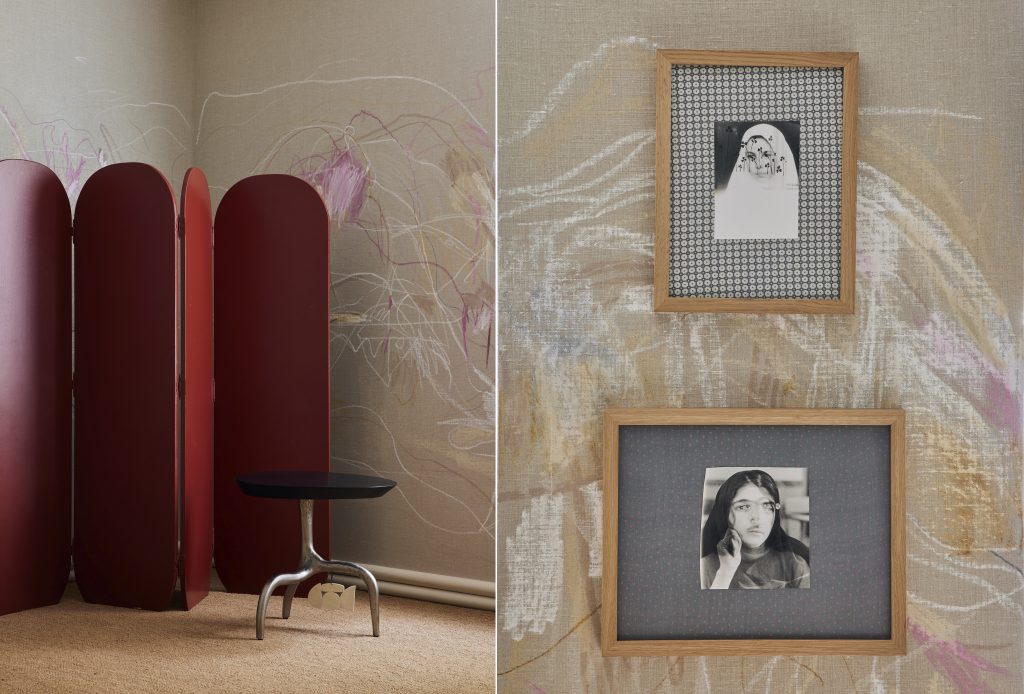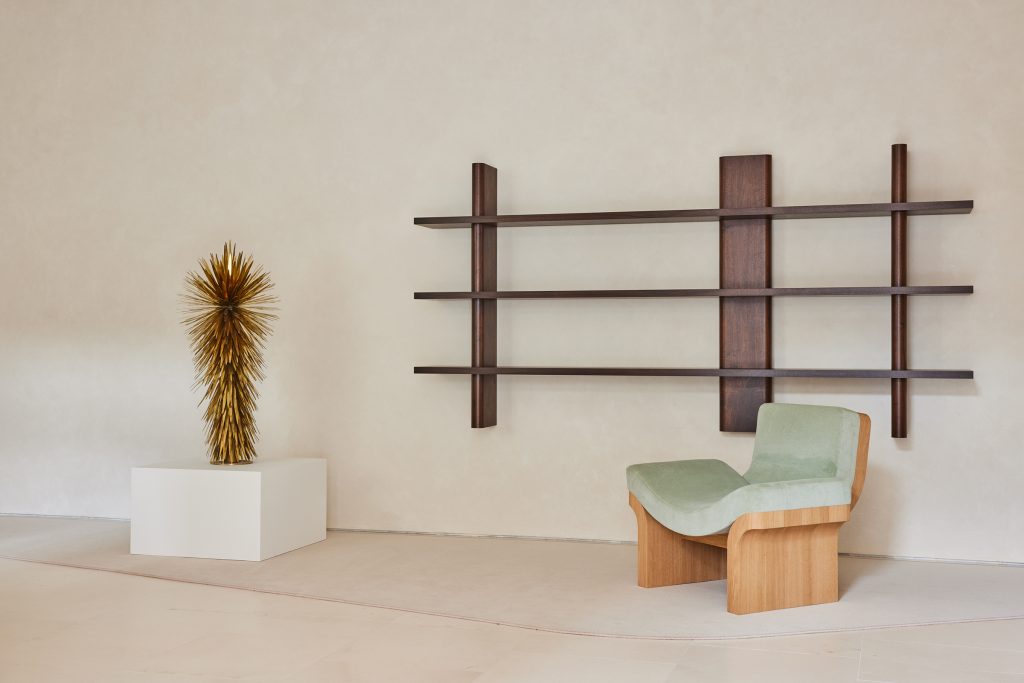Egg Collective’s “Designing Women III: Mother” Art + Design Exhibition
Contemporary and historic work by 28 women from around the world

In the Tribeca gallery of design firm Egg Collective, the work of 28 women from around the world—all of whom are mothers—composes the serene, serendipitous group exhibition Designing Women III: Mother. An assemblage of art and design, the show pairs contemporary and historic works from established and emerging talent. Alongside another, these pieces speak to the power of motherhood in tandem with artistic creation. They also tell stories of the pioneering women behind them. Further, proceeds from the exhibition directly benefit the artists, designers and participating galleries, as well as the non-profit Every Mother Counts.

The viewer expectations that accompany a design show are often different than those purely presenting art; with Egg Collective’s curation, it’s a collision of both—and an enticing one at that. “It’s a blurry line,” co-curator Crystal Ellis, one of Egg Collective’s three founders, tells us during our walkthrough. “Both art and design are about creating something new and putting that out into the world. I guess it comes down to function in the end. Design—what I love about it, is that it has a discernible purpose that creates a framework or a parameter that my brain works with. Art also has an extremely important function, but it’s not as simple as ‘I sit on this’ or ‘dine on that.'”

Addressing this distinction is important because everything in Designing Women III: Mother could be considered art. Ellis, with co-founders Stephanie Beamer and Hillary Petrie, as well as artist Tealia Ellis Ritter, curated the show in a similar manner to the first two iterations, Designing Women (2017) and Designing Women II: Masters, Mavericks, and Mavens (2018). Each installment intends to (and succeeds) foster “a dialogue about women in the applied and fine arts.”
Regarding curation, Ellis says they “begin with conversations about what we want to say. We never repeat artists. There are enough women out there doing amazing work, so there’s no reason to repeat—even though we’ve loved all of the women we’ve worked with. We’re also looking for works that operate on a variety of scales and utilize various materials, with a diverse age range and drawn from different time periods, backgrounds and personal experiences. We want a conversation that’s multi-layered and manifold.” To walk through each room is to understand this.

Upon entry, guests are greeted by Faith Ringgold’s “Dear Selma, Every Time I See A Dime, I Think Of You” (2010). It’s an indelible introduction to the exhibition and sets the pace, asking guests to contemplate the pieces before them and read what they have to say. A few feet away, Lucia DeRespinis’ Beehive Lamp (produced in George Nelson’s studio) dangles above Maria Pergay’s Wave Desk. In contrast to the familiar fine art of Ringgold, these design elements reveal their function up front. But as Ellis reminds us, each has a story. In fact, DeRespini also happens to be the designer of the 1980 Dunkin Donuts logo.

One room away, the line of art and design is again challenged with Maria Pergay’s “Drape Cabinet A and B” (2005). “She has such a singular creative vision,” Ellis explains. “There’s an extravagance and wit to it. I’ve never seen another piece of furniture quite like these.” In one of the two cabinets, the steel appears to be peeling away, in its partner, the wood seems to do the same.

Elements of surrealism appear elsewhere, including in “Lure Radiata” (2021) by Jean Pelle of PELLE. This floral wall-mounted light fixture, composed of cast cotton paper that’s been painted, glows off the wall. Beside it, rises “Beads I (2018)” by Elizabeth Atterbury. While pregnant, the artist had cravings for peaches—and she kept and carved all of the pits. It’s a study in habitual behavior, and a study in time.
The glass and travertine “Metaphora Coffee Table” (1970) is present for more than its charming aesthetics. Originating from Vignelli Associates, this piece is often credited to Massimo Vignelli, but it’s been reported time and again that his wife and partner, Lella Vignelli, directed the 3D works from their studio.

Our personal favorite experience within the installation is the site-specific, hand-drawn wallpaper called “Duet” (2021) which was created by Rachel Cope—co-founder of Calico Wallpaper—and her six-year-old daughter, Willow. “We gave them free rein,” Ellis says. “They put canvas on the walls. Rachel selected a palette of oil crayons and then let Willow go draw on the canvas. The markings stop at human height. Rachel did not touch anything until Willow was done, and worked to pull in more color.” The effect is of release, relief and joy, especially when coupled with the pristine “Hornbake Straight Sofa” (2021) by Egg Collective.
“We are trying to show how when you think about motherhood, there are so many emotions that come with it, from high joy to struggle. This moment is about levity and childhood and the connection between mother and child,” Ellis says. The other artistic additions peppered through the room—”Charm Table” by Kelly Behun, “DV1 Divider” by Kai Avent-deLeon and the photographic works, “Untitled” (1999) and “Untitled” (2002) by Tahereh Fallahzadeh, emphasize the humanity and home-like nature of the exhibit.

The final room provides a discourse between a handful of wooden works, including a set by Charlotte Perriand—”Dining table (Edition Steph Simon)” (1960), “Oak and Rush Chair” (1950) and “Low Stool” (1950)—and Egg Collective’s new wall-mounted bookcase, “The Landry” (2021), which can be scaled to a broad range of dimensions and sizes. It presents no visible hardware but binds groundbreaking design across decades.

German designer Renate Müller provides a burst of playfulness opposite the wooden furniture. Her contribution, “Universe II: Shadows on the Moon” (2015), a giant and colorful play space, comes from her practice of producing therapeutic toys for children with developmental issues. The piece (on loan from R&Co) was made entirely by Müller—and it’s meant to be arranged and rearranged.

Within and around these highlights are tales of women who have balanced domestic commitments with their practice. It’s a personal exhibition, with quieter stories running beside bombastic pieces—and it’s worthwhile to listen to them all.
Designing Women III: Mother runs through 29 May. Appointments can be made online. You can also explore a digital version of the exhibit.
Images courtesy of Egg Collective, by Ori Harpaz












